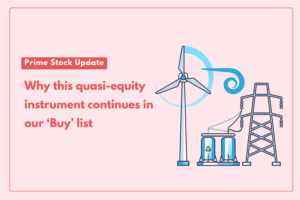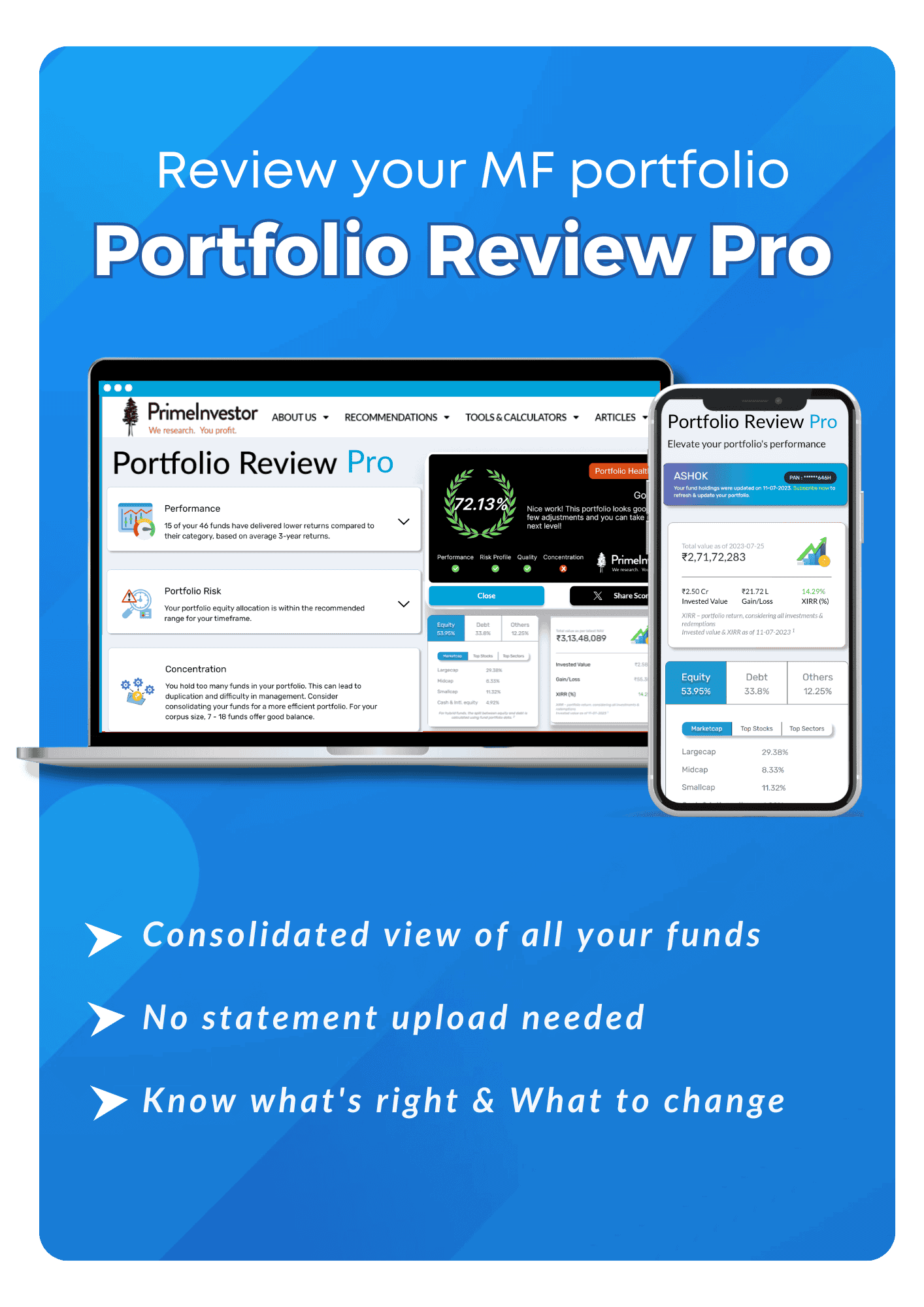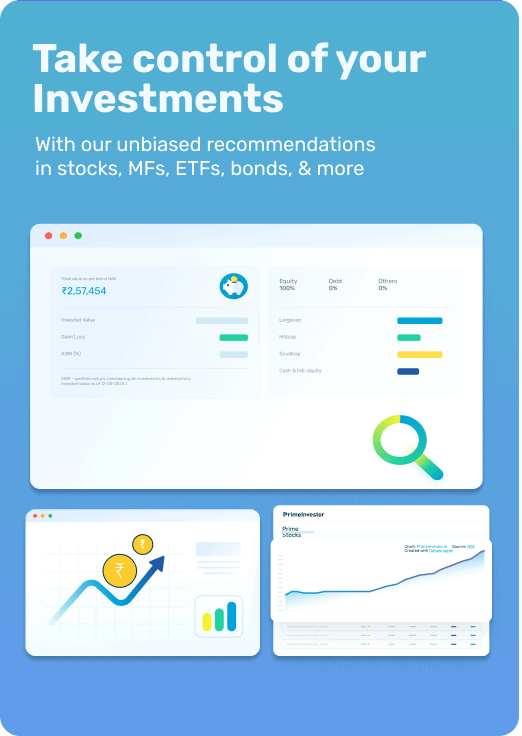Mid and small-cap funds form a part of a long-term portfolio to boost overall portfolio returns. But there are times when these market-cap segments underperform for various reasons. The small-cap index spent much of 2022 languishing behind the Nifty 50. This is now changing, serving up a good opportunity to focus on the small-cap segment.

Smallcap opportunity
The 1-year rolling returns data below will also tell you that small caps have only just started the catch up after underperforming the Nifty for a good while. We think there is scope for entering the small-cap market cap segment now, especially given the sound earnings in segments like capital goods and the recovery in sectors such as auto and chemicals.
In addition the PE data below for the Nifty Smallcap 250 will tell you that valuations (price earnings ratio) have moderated significantly, aided by earnings growth. This provides comfort to enter this-market cap segment even though it may appear that the small-cap index is closer to its peak.
Small cap fund pick
In the small-cap space, most active funds continue to showcase significant outperformance over small cap indices. For this reason, we continue to favour actively managed funds in this segment as opposed to index funds.
If you hold any of the small-cap funds on which we have a ‘buy’ you can continue to invest in them. Our call now is from one of the small-cap Prime Funds already in our recommended list – Nippon India Small Cap fund. The reason for picking this fund at this juncture is that its sector holding is closer to the Nifty Smallcap 250 index than SBI Smallcap (the other small-cap pick in Prime Funds, and one which has an interesting contrarian holding). If you have SBI Smallcap in your portfolio, the Nippon Smallcap fund can still complement it - provided you do not go overboard on your total mid and small-cap holding (read the last section on How to Invest). The other reason to prefer this is that the limitation on fresh investment (inflow restrictions) is higher in SBI Small Cap than the Nippon fund.
Performance
Nippon India Small Cap fund is among the more consistent performers in the small-cap fund space. The fund has beaten the benchmark all the time on a rolling 3-year return basis and 92% of the times even over shorter rolling 1-year periods (returns rolled for 3 years for both the data points).
But beating benchmarks is not a big deal in the small-cap space. A peer comparison shows that the fund also beat its peers almost all the time over rolling 3-year periods and outperformed 4 out of 5 times over rolling 1-year periods. The margin of outperformance over peers is also very comfortable. However, the fund can be a lot more volatile than peers as suggested by its standard deviation and worst returns. To this extent, it is a riskier fund than peer SBI Small Cap.
Portfolio
Nippon Small Cap has a significantly diversified portfolio of about 170 stocks. Hence, the top holdings will not give you an idea of the weight in sectors.
Nippon India Small Cap has high weight to the capital goods space at about 21%, higher than the Nifty Smallcap 250 and higher than most top performing peers. This sector exposure, we think, will help capture the momentum in the small-cap space, given that a sector like capital goods is now well-backed by earnings growth as well. Other holdings in auto and chemicals also hold potential given the recovery underway in these sectors.
Another sector that has helped the small cap space do well is financial services. However, Nippon India Small Cap has preferred to play this segment primarily with large banks (given that small-cap funds have leeway to invest 35% of assets outside of small-cap stocks). We are not complaining as this strategy has yielded good results and ensured that the fund’s liquidity remains reasonably healthy. The average liquidity (ability to sell the stocks in a certain number of days) for Nippon’s portfolio is also better than SBI’s. SBI though reduces the liquidity risk with higher exposure to cash and derivatives. This strategy, though, may have cost a bit of returns for it.
Nippon India Small Cap’s AUM is currently over Rs 26,000 crore. While size is often a deterrent for small-cap funds, Nippon has consistently managed its size successfully, without taking a hit on performance thus far. Also, with SEBI’s definition of small-cap stocks currently at close to Rs 17,000 crore, we think there is a lot more room now than 5 years ago for funds to manage size comfortably in this space.
How to invest
- The fund is for long-term holding of 5 years and above only. Do not use it in short-term portfolios.
- At this juncture, 3-6 months of your SIP value as lumpsum and the rest in SIP would be a good strategy to follow. Do not add this fund if your small-cap exposure is already high.
- If your corpus is large, your time frame is long (and risk appetite is high) and your exposure to small and midcaps put together is still under 10% of your portfolio, then you can consider adding this fund even if you already hold a small cap fund.
- Among the small-cap funds that have a BUY in our MF review tool, this fund has the least overlap with SBI Smallcap given the latter’s high exposure to consumer discretionary. With other funds, the overlap varies from 12-16% - which is still not high.








19 thoughts on “Prime Fund recommendation: A fund to play the small cap pick up”
Hi! You have given a very insightful recommendation. Does it still hold true. Want to invest in small cap fund. Is this recommendation still relevant. Thanks.
It is if you have a long term view (5 years). Only SIPs are allowed in most funds effective July. Vidya
Appreciate Inputs on the QFew Question
1) How much AUM matter in any fund or Small Size .(Nippon SC has largest 23KCr size and whether agility wise they can deploy 80-85 % cash
2) For retail MF investor who is investing from 10+ yrs , in Mid/Small/Flexi cap , how to blend this recommendation when you say investment is for long-term holding of 5 years and above only to enjoy the return
3) As you mentioned the leaders keeps changing how one should will generate return when he keeps on adding new MF per recommendation
4) One must hold for how many years to generate return above Large/Flexi cap.
1. There is no set limit. it has to be seen in relation to market cap size of the small-cap category and overall marketcap of listed universe. Today small-cap as defined by SEBI has grown to Rs 17,000 crore. That means small-cap stocks may have higher float as well. So as the marketcap definition of small caps move up, then average AUM size can also grow larger without much difficulty. With Nippon, we could easily see that it is managing corpus well and it also has leeway to invest some amount in mid and large caps (as allowed by SEBI) that it has used well to stay liquid.
2. It means use it in any long-term portfolio of 5 year plus..it could be 10,15 or 20 years.
3. Yes, it is a challenge. No choice but to see if this works or move. The only other way is index but in this segment active outperforms index for now.
4. 5 plus years.
Thank you for the inputs
Well explained, thank you. How about Axis small cap? Its having the rating of 4 in the prime funds list, against 3.5 of Nippon.
That’s based on past data sir. Please read our article on why rating is not a recommendation here: https://www.primeinvestor.in/varsity/mutual-fund-ratings-not-a-recommendation-to-buy/ 🙂
I wish to invest in Nippon Small Cap. Please confirm
(i) if now is the right time to add Nippon small cap fund in the portfolio or are we too late as many small cap are seems to already give run up and having high NAV since past few years.
(ii) how long can I make investment in Nippon Small Cap Portfolio as I will start now. As I understand small cap do not run for long and had not been performing since quite sometime
(iii) how much exposure should we make say in terms f percentage of portfolio or total lump sum in tranches
We have answered through our support. Thanks, Vidya
Few Question
1) How much AUM matter in any fund or Small Size .(Nippon SC has largest 23KCr size and whether agility wise they can deploy 80-85 % cash
2) For retail MF investor who is investing from 10+ yrs , in Mid/Small/Flexi cap , how to blend this recommendation when you say investment is for long-term holding of 5 years and above only to enjoy the return
3) As you mentioned the leaders keeps changing how one should will generate return when he keeps on adding new MF per recommendation
4) One must hold for how many years to generate return above Large/Flexi cap.
Respected Madam
Good Article but can you please suggest on following queries :
1) You suggested Nippon small Cap – but why not Quant small cap and DSP small cap and canara robeco small cap fund.
reason : Quant small cap is more active in mf category than Nippon small cap. DSP small cap has stellar records of generating more alpha in bull runs. I wish to know what more advantage in adding Nippon Small cap vis a vis above mentioned 2 funds ?
2) whats your suggestion ie. whether retail investor can add all Small cap fund which have proven track records of last 10 years of generating alpha ? Reason : investor can reduce dependency on single mf.
1. Nippon has scored over the other funds you said in our research metrics and reason why it is part of Prime Fund. Please run MF screeners to find out why. Canara – we have mentioned you can also use any other fund on which we have a BUY on our MF review tool, if you already hold it. Do check it. The other reason for choosing Nippon is its current portfolio exposure to sectors. We have explained it in the article.
2. We have discussed in several earlier articles on the risk of looking too backward in time with mid and small caps. There are no consistent performers. Of course reduce dependency on single MF and go with other funds we have a buy on or even use index if you prefer it passive and hug the market as a hedge to active. thanks, Vidya
Are there any restrictions in terms of limits on lumpsums and SIPs in this fund?
Definitely there in lumpsum. Please check on your platform or with your service provider as it can keep changing.
I am looking to buy ETF only for some reason so can you suggest any alternative small cap ETF which we can consider?
Thanks
If you are a subscriber, in future, please write to us here https://www.primeinvestor.in/contact-us/ for such specific recommendation related queries. There is HDFC Nifty SMallcap 250 ETF but avoid buying large lumpsums (like over a couple of lakhs) in a single tranche as turnover is not great.
Thanks for your response.
Yes I am a subscriber for long term and sure will follow that process. Thank you.
Also it would be nice to have a small icon or a badge on the profile pic
to differentiate subscribers.
We will definitely keep that in mind. thanks Vidya
Great timing Vidya !,I was just looking for a fund to take exposure in smallcap space.Very nice article Congratulations!
Comments are closed.